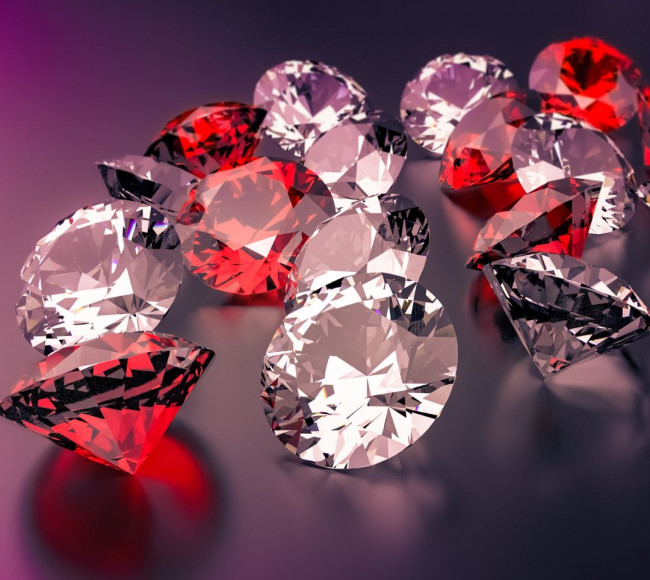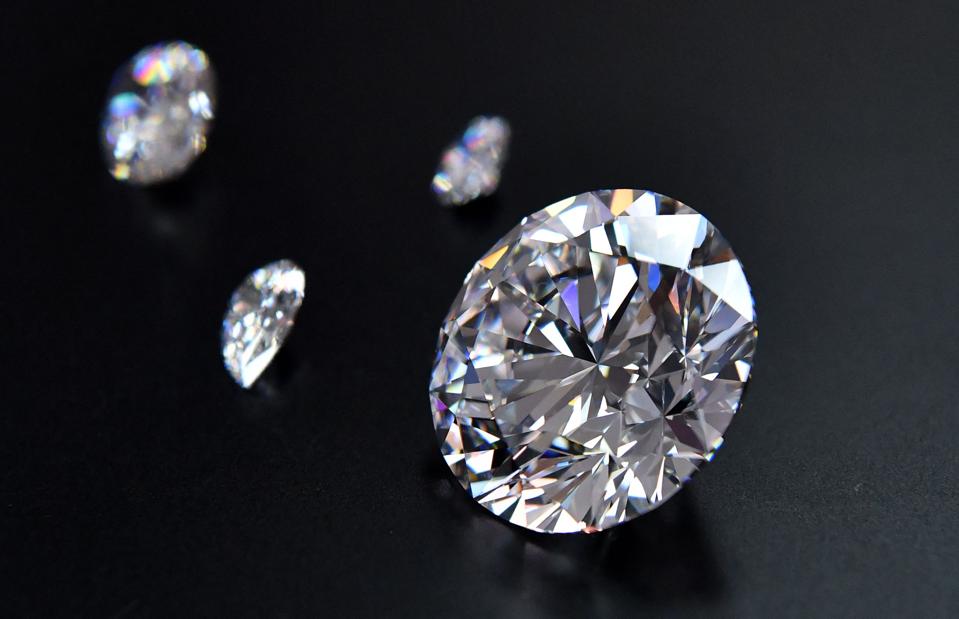Buying a diamond is a significant investment, whether for an engagement ring, anniversary gift, or personal collection. With so many options available, it’s essential to understand the key factors that influence a diamond’s quality, value, and pricing. Guide to Buying Diamonds
A well-informed buyer can find a high-quality diamond that meets their preferences while staying within budget. This guide will help you make an educated decision, ensuring you get the best diamond for your money. Guide to Buying Diamonds
The Smart Shopper’s Guide to Buying Diamonds

1. Understanding the 4 Cs of Diamonds
The 4 Cs—Cut, Color, Clarity, and Carat—are the universal standard for evaluating diamond quality. Understanding each of these elements is crucial for making a smart purchase.
- Cut: Determines a diamond’s brilliance and sparkle. A well-cut diamond reflects light beautifully, enhancing its visual appeal. A poorly cut diamond, even if high in carat weight, may appear dull.
- Color: Rated from D (colorless) to Z (light yellow/brown). The less color a diamond has, the more valuable it is. Colorless diamonds are the most expensive, but near-colorless diamonds (G-H grades) offer excellent value.
- Clarity: Measures the presence of inclusions (internal flaws) and blemishes. Fewer imperfections increase a diamond’s clarity grade, though many small inclusions are invisible to the naked eye. Guide to Buying Diamonds
- Carat Weight: Represents the size of the diamond. Larger diamonds are rarer and more expensive, but a well-cut smaller stone can appear just as striking as a larger one.
2. Choosing the Right Diamond Shape
Diamonds come in various shapes, each offering a unique aesthetic appeal. Selecting the right shape depends on personal preference and style. Guide to Buying Diamonds
- Round Brilliant: The most popular shape, known for maximum brilliance.
- Princess Cut: A modern, square-cut style with sharp angles, often chosen for engagement rings.
- Emerald Cut: A rectangular cut with step-like facets, offering a sophisticated and vintage look. Guide to Buying Diamonds
- Oval Cut: Elongates the finger and offers excellent brilliance, similar to round diamonds.
- Cushion Cut: A vintage-inspired square or rectangular shape with rounded corners, offering a soft, romantic appeal.
- Pear Cut: A teardrop shape that combines elegance and uniqueness.
- Marquise Cut: A football-shaped diamond that appears larger due to its elongated design.
3. Understanding Diamond Certifications
A certified diamond ensures that you are getting an authentic and accurately graded stone. The most reputable gemological laboratories include:
- GIA (Gemological Institute of America): The most trusted diamond grading authority, known for strict grading standards.
- AGS (American Gem Society): Provides strict grading similar to GIA, often used for high-quality diamonds.
- IGI (International Gemological Institute): Common for retail diamonds but may have looser grading standards than GIA or AGS.
- HRD (Hoge Raad voor Diamant): A well-known European certification authority.
4. Setting a Budget and Finding the Best Value
- Prioritize Cut Quality: A well-cut diamond enhances brilliance, making it look larger and more beautiful than a poorly cut stone of the same size.
- Consider Near-Colorless Diamonds: A G-H color grade offers excellent value without the high cost of a D-grade diamond.
- Opt for Eye-Clean Clarity: SI1 or VS2 clarity diamonds may have tiny imperfections that are invisible to the naked eye.
- Buy Slightly Below Whole Carat Weights: A 0.90-carat diamond can be significantly cheaper than a full 1-carat stone while looking nearly identical.
- Shop Around: Compare prices from online retailers and brick-and-mortar stores to find the best deal.
5. Ethical and Sustainable Diamond Options

For conscious shoppers, ethical and eco-friendly diamonds are excellent alternatives.
- Lab-Grown Diamonds: Chemically identical to natural diamonds but more affordable and environmentally friendly.
- Recycled Diamonds: Pre-owned diamonds that have been re-cut and repurposed, reducing the demand for new mining.
- Ethically Sourced Diamonds: Look for conflict-free certification under the Kimberley Process or from brands committed to ethical mining practices.
- Blockchain Tracking: Some jewelers now offer blockchain-verified diamonds to ensure ethical sourcing and transparency.
6. Choosing the Right Diamond Setting
The setting plays a significant role in enhancing the diamond’s beauty and security.
- Solitaire: A classic and timeless choice that highlights the diamond.
- Halo: Surrounds the center stone with smaller diamonds for added sparkle and a larger appearance.
- Three-Stone: Represents the past, present, and future, making it a meaningful option for engagement rings.
- Bezel: A protective setting that encases the diamond in metal, perfect for those with an active lifestyle.
- Pavé: Small diamonds set closely together to create a continuous sparkle along the band.
7. Where to Buy Diamonds
- Local Jewelers: Offer personalized service and the ability to inspect diamonds in person.
- Online Retailers: Sites like Blue Nile, James Allen, and Brilliant Earth provide high-quality diamonds at competitive prices with detailed images and certification.
- Auction Houses and Estate Sales: Great for unique and vintage diamonds, often at a lower price than retail.
- Wholesale Dealers: Some wholesalers sell directly to consumers, offering significant savings.
8. Tips for Making a Smart Purchase
- Compare Prices Across Multiple Retailers: Check both online and in-store options.
- Inspect the Diamond in Different Lighting: Natural light, fluorescent light, and LED lighting reveal different aspects of a diamond’s appearance.
- Check Return and Warranty Policies: Ensure flexibility in case you change your mind or need repairs.
- Get an Independent Appraisal: Confirms value and authenticity before finalizing your purchase.
- Negotiate the Price: Many jewelers are willing to offer discounts, especially if paying in cash.
9. Diamond Care and Maintenance
To maintain the beauty and longevity of your diamond jewelry:
- Regular Cleaning: Use mild soap and warm water with a soft brush to remove dirt and oils.
- Professional Inspections: Have a jeweler check the setting and prongs annually to ensure security.
- Avoid Harsh Chemicals: Remove diamond jewelry when using cleaning products or swimming in chlorinated water.
- Proper Storage: Keep diamonds in a soft-lined jewelry box to prevent scratches.
Buying a diamond requires careful research and understanding of quality factors. By focusing on the 4 Cs, choosing a reputable seller, and considering ethical options,
you can find the perfect diamond that balances beauty, quality, and budget. Whether purchasing an engagement ring, an anniversary gift, or an investment piece, making an informed decision ensures long-lasting satisfaction.
